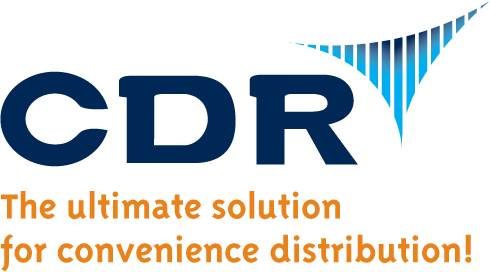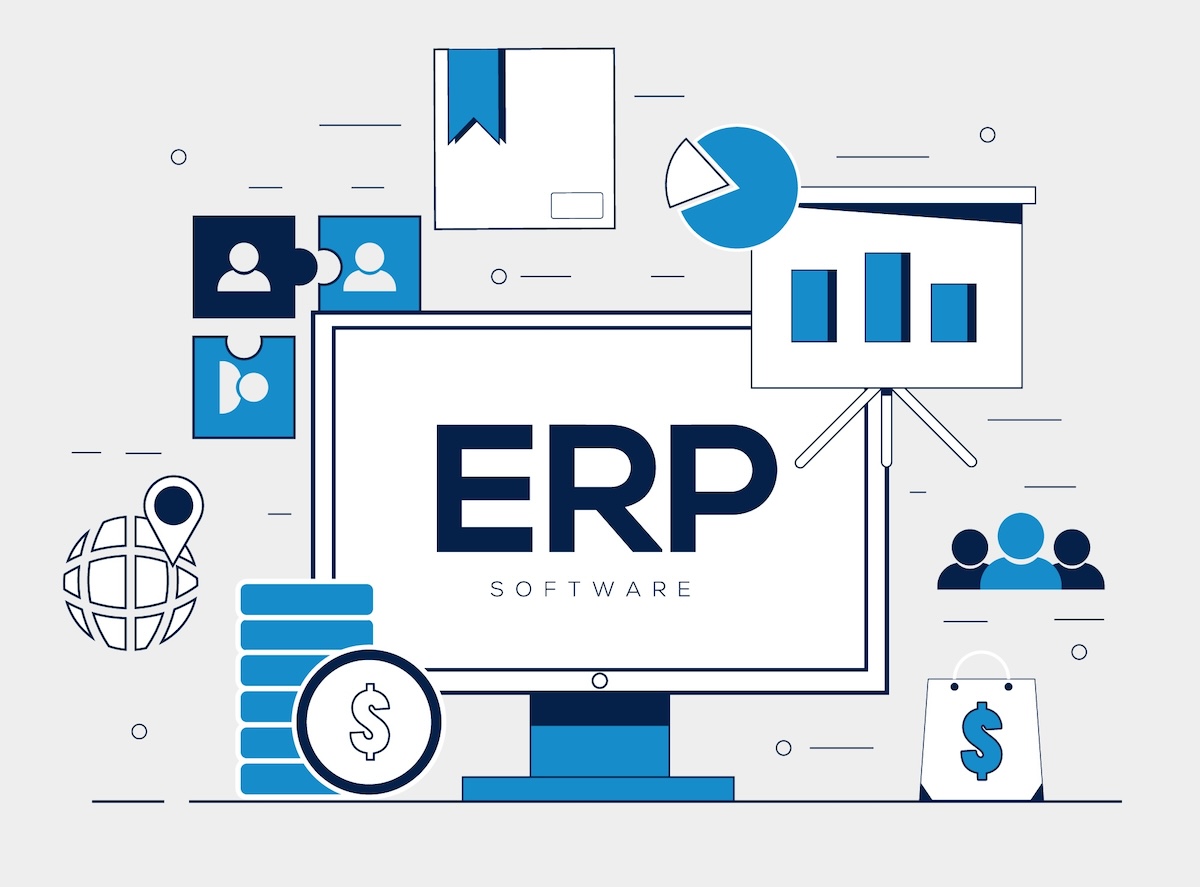In the fast-paced world of convenience store distribution, managing a wide variety of products, handling MSA MULTICAT requirements, optimizing rebate programs, and maintaining an efficient supply chain are critical to success. An ERP for convenience distribution can transform these challenges into manageable tasks, providing distributors with the tools needed to streamline operations and boost profitability.
Implementing an Enterprise Resource Planning (ERP) system isn’t just about adopting new software—it’s about revolutionizing the way your wholesale business operates. In this article, we’ll delve into the unique challenges faced by convenience store distributors and demonstrate how an ERP system can address these challenges effectively. From handling complex inventories to managing MSA MULTICAT requirements and optimizing supply chain dynamics, we’ll explore practical solutions and the significant benefits an ERP system can bring to your business.
Understanding the Unique Challenges in Convenience Distribution
Convenience store distributors operate in a uniquely demanding environment. The diversity of products, the need to manage complex inventory and rebate programs, and the rapid pace of transactions all contribute to a complex operational landscape. To stay competitive, distributors must find ways to manage these complexities efficiently.
In this section, we’ll break down the major challenges and provide strategic insights into how an ERP for convenience distribution can help overcome them. By understanding these challenges, you can better appreciate the value of investing in an ERP system tailored to the needs of convenience distributors.
Inventory Complexity
Challenge: Convenience store distributors manage a diverse range of products, from perishables with short shelf lives to non-perishables and high-demand items like tobacco. Each of these product categories requires different handling and turnover rates. Managing such a varied inventory without errors or inefficiencies poses a significant challenge.
For instance, perishable items like dairy products need constant monitoring to avoid spoilage, while non-perishable items require efficient space utilization to prevent overstocking. Additionally, high-demand items such as tobacco must be readily available to meet customer needs without tying up too much capital in inventory.
Solution: Implement an ERP system with advanced inventory management features that can handle diverse product types. Utilize ERP functionalities like automated stock level adjustments, expiration tracking for perishables, and demand forecasting to maintain optimal stock levels and minimize waste. These features allow you to:
- Automate stock level adjustments: Automatically adjust inventory levels based on sales data and predefined thresholds, reducing manual intervention and errors.
- Track expiration dates: Monitor the shelf life of perishable goods to ensure timely sales or disposal, minimizing waste and losses.
- Forecast demand accurately: Use historical sales data and market trends to predict future demand, ensuring that you have the right products in the right quantities at the right time.

MSA MULTICAT and Rebates Management
Challenge: Managing MSA MULTICAT requirements for tobacco products and handling rebate programs for various items, such as candy, can be complex and time-consuming. Each product category has unique requirements for tracking, reporting, and claiming rebates, adding layers of administrative burden to distributors.
MSA MULTICAT Reporting: MULTICAT™ is the file format used to report sales and inventory data to Management Science Associates Inc. (MSA). This reporting is crucial for tobacco, candy, drinks, and grocery distributors participating in trade programs. The reports are submitted weekly in ASCII format, detailing sales and inventory counts. This data is essential for maintaining direct purchasing status with manufacturers and for receiving those all-important manufacturer rebates.
Solution: An ERP system with specialized modules for MSA MULTICAT management and rebates can streamline these processes. By having an ERP for convenience distribution that includes these features, you can:
- Simplify MSA MULTICAT Reporting: Automate the creation and submission of weekly MULTICAT reports. Ensure that all mandatory data fields, such as product details and sales quantities, are accurately captured and reported.
- Ensure Compliance: Maintain compliance with trade program requirements by accurately reporting data. The ERP system can validate the reports and ensure they are error-free before submission.
- Manage Rebates Efficiently: Track sales and purchases to accurately calculate rebate amounts. The ERP system can automate the submission of rebate claims and track their status, ensuring you receive the financial benefits promptly.
- Maintain Direct Purchasing Status: By consistently providing accurate sales and inventory data, ensure that you maintain your status as a direct purchaser from manufacturers, avoiding penalties and ensuring continued business relationships.
- Improve Data Accuracy: Consolidate all relevant data within the ERP system, making it easier to manage and access information related to MSA MULTICAT and rebates. This consolidation enhances transparency and improves decision-making.
Supply Chain Dynamics
Challenge: The rapid transaction cycles typical in convenience store distribution require a highly responsive supply chain. Delays in replenishment or inaccuracies in order tracking can lead to significant disruptions and lost sales. The need for quick turnaround times and the ability to respond to real-time market demands add layers of complexity to supply chain management.
For example, unexpected spikes in demand for certain products, such as beverages during a heatwave or snacks during major sports events, require swift action to avoid stockouts. Without a responsive supply chain, distributors may miss out on sales opportunities and damage customer satisfaction.
Solution: Leverage an ERP system with real-time data capabilities and integrated supply chain management. This setup ensures that information from sales to stock replenishment is seamlessly connected, allowing for swift adjustments to supply chain operations based on actual sales data and inventory levels. Key benefits include:
- Real-time visibility: Gain a comprehensive view of your supply chain operations, enabling you to identify bottlenecks and inefficiencies quickly.
- Integrated logistics management: Coordinate and streamline logistics activities, from procurement to delivery, ensuring timely replenishment of stock.
- Automated order processing: Reduce manual errors and speed up order fulfillment by automating order processing and tracking.
Related: Top 10 Features to Consider When Choosing Distribution Software

Benefits of an ERP for Convenience Distribution
Improved Operational Efficiency
An ERP system integrates various business processes, eliminating silos and enhancing communication across departments. This integration leads to smoother operations, reduced redundancy, and lower operational costs.
By consolidating data and automating routine tasks, distributors can focus more on strategic activities that drive growth. For example, an ERP system can automate the reordering process based on predefined inventory levels, reducing the time spent on manual stock checks and order placements.
Enhanced Data Accuracy and Reporting
With an ERP system, data from different sources is consolidated into a single database, ensuring consistency and accuracy. This consolidation facilitates comprehensive reporting and analytics, helping c-store distributors make informed decisions.
Accurate data enables better demand forecasting, financial planning, and performance tracking. For instance, sales trends can be analyzed to forecast future demand accurately, allowing for better inventory planning and avoiding overstock or stockouts.
Better Customer Service
Real-time inventory tracking and supply chain visibility enable distributors to respond quickly to customer demands. This responsiveness can significantly enhance customer satisfaction and loyalty.
With an ERP for convenience distribution, customer orders can be processed more efficiently, and accurate delivery timelines can be provided. Additionally, having real-time stock information means that customer inquiries about product availability can be answered promptly, improving overall service quality.
Why Choose CDR’s DAC ERP for Convenience Distribution
CDR Software’s DAC ERP system is designed specifically to address the unique challenges faced by convenience store distributors. By integrating advanced features tailored to the needs of this industry, DAC ERP offers a comprehensive solution that enhances operational efficiency, compliance, and profitability.
Key Features of CDR’s DAC ERP:
- Advanced Warehouse and Inventory Management: DAC ERP’s built-in warehouse and inventory management capabilities handles diverse product categories with ease. It offers automated stock level adjustments, expiration tracking for perishables, and demand forecasting, ensuring optimal stock levels and minimal waste.
- MSA MULTICAT Management: Simplify the complex process of reporting sales and inventory data for multiple product categories, including tobacco. DAC ERP automates the generation and submission of MULTICAT reports to MSAi and manufacturers, ensuring accurate and timely data. This reduces manual effort, minimizes the risk of errors, and helps maintain your direct purchasing status and eligibility for rebates.
- Rebate Management: Efficiently manage rebate programs for various products, including candy and other non-perishables. The system tracks sales and purchases to calculate rebate amounts accurately, automates the submission of rebate claims, and tracks their status to ensure you receive financial benefits promptly.
- Real-Time Supply Chain Integration: DAC ERP provides real-time visibility into your supply chain operations, enabling swift adjustments based on actual sales data and inventory levels. Integrated logistics management ensures timely stock replenishment and coordinated delivery activities.
- Comprehensive Data Reporting: Consolidate data from various sources into a single database for consistent and accurate reporting. DAC ERP offers robust analytics and reporting tools that support informed decision-making, better demand forecasting, and financial planning.
- Enhanced Customer Service: With real-time inventory tracking and responsive supply chain management, DAC ERP ensures quick and accurate order processing. This responsiveness leads to improved customer satisfaction and loyalty, helping you maintain a competitive edge.
Why CDR’s DAC ERP Stands Out:
- Tailored for Convenience Store Distribution: Unlike generic ERP solutions, DAC ERP is designed specifically for the convenience store distribution sector, addressing its unique challenges and requirements.
- User-Friendly Interface: DAC ERP features an intuitive interface that is easy to navigate, ensuring that your team can quickly adapt to and effectively use the system.
- Scalability: Whether you are a small distributor or managing a large network, DAC ERP scales with your business, providing the flexibility needed to grow and adapt to changing market conditions.
- Dedicated Support: CDR Software offers dedicated customer support to assist with implementation, training, and ongoing system optimization, ensuring that you get the most out of your ERP investment.
Related: Mastering ERP Implementation: A Guide for Distributors
Conclusion
For convenience store distributors, an ERP system is not just a technological upgrade but a strategic necessity. It addresses the unique challenges of inventory complexity, MSA MULTICAT and rebate management, and supply chain dynamics, transforming them into opportunities for growth and efficiency. By investing in a robust ERP system like CDR’s DAC ERP, distributors can streamline their operations, maintain direct purchasing status, and ultimately drive their business forward.
Ready to transform your distribution operations? Contact us today to learn more about how CDR’s DAC ERP can help your business thrive.
FAQ: ERP for Convenience Distribution Questions
What is an ERP system?
An Enterprise Resource Planning (ERP) system integrates various business processes into one comprehensive system, allowing organizations to streamline operations, enhance data accuracy, and improve overall efficiency.
Why do convenience store distributors need an ERP system?
Convenience store distributors handle a wide range of products, complex inventory, MSA MULTICAT reporting, and rebate management. An ERP system tailored to the convenience industry helps manage these tasks efficiently, reducing errors and manual labor while improving profitability.
What is MSA MULTICAT reporting?
MSA MULTICAT reporting is the process of submitting weekly sales and inventory data for multiple product categories to Management Science Associates Inc. (MSAi) or directly to manufacturers. This reporting is essential for maintaining direct purchasing status and receiving manufacturer rebates.
How does an ERP system simplify MSA MULTICAT reporting?
An ERP system tailored to convenience distribution, like DAC ERP from CDR Software, automates the creation and submission of MULTICAT reports, ensuring accurate and timely data. This reduces manual effort, minimizes errors, and helps maintain compliance with trade program requirements.
Can an ERP system help with rebate management?
Yes, an ERP system can efficiently manage rebate programs by tracking sales and purchases, automating rebate claim submissions, and monitoring the status of these claims to ensure financial benefits are received promptly.
What features should convenience store distributors look for in an ERP system?
Distributors should look for ERP systems that offer advanced inventory management, automated reporting for MSA MULTICAT, efficient rebate management, real-time supply chain integration, and robust data reporting and analytics.
Can an ERP system integrate with existing software used by distributors?
Yes, most modern ERP systems are designed to integrate seamlessly with other software systems commonly used in the distribution industry, such as accounting software, CRM systems, and other business management tools.
How does an ERP system enhance data accuracy and reporting?
An ERP system consolidates data from various sources into a single database, ensuring consistency and accuracy. This facilitates comprehensive reporting and analytics, helping distributors make informed decisions based on accurate data.
What are the cost considerations when implementing an ERP system?
Costs can vary based on the size of the business and the complexity of its operations. Key considerations include initial setup costs, licensing fees, training, and ongoing maintenance and support costs. It’s important to evaluate the long-term ROI of an ERP system.
How can distributors ensure a successful ERP implementation?
Successful ERP implementation involves careful planning, including selecting the right system, thorough training for users, data migration, and continuous support. Engaging with a provider that offers dedicated implementation and training services can greatly enhance the success of the implementation process.

